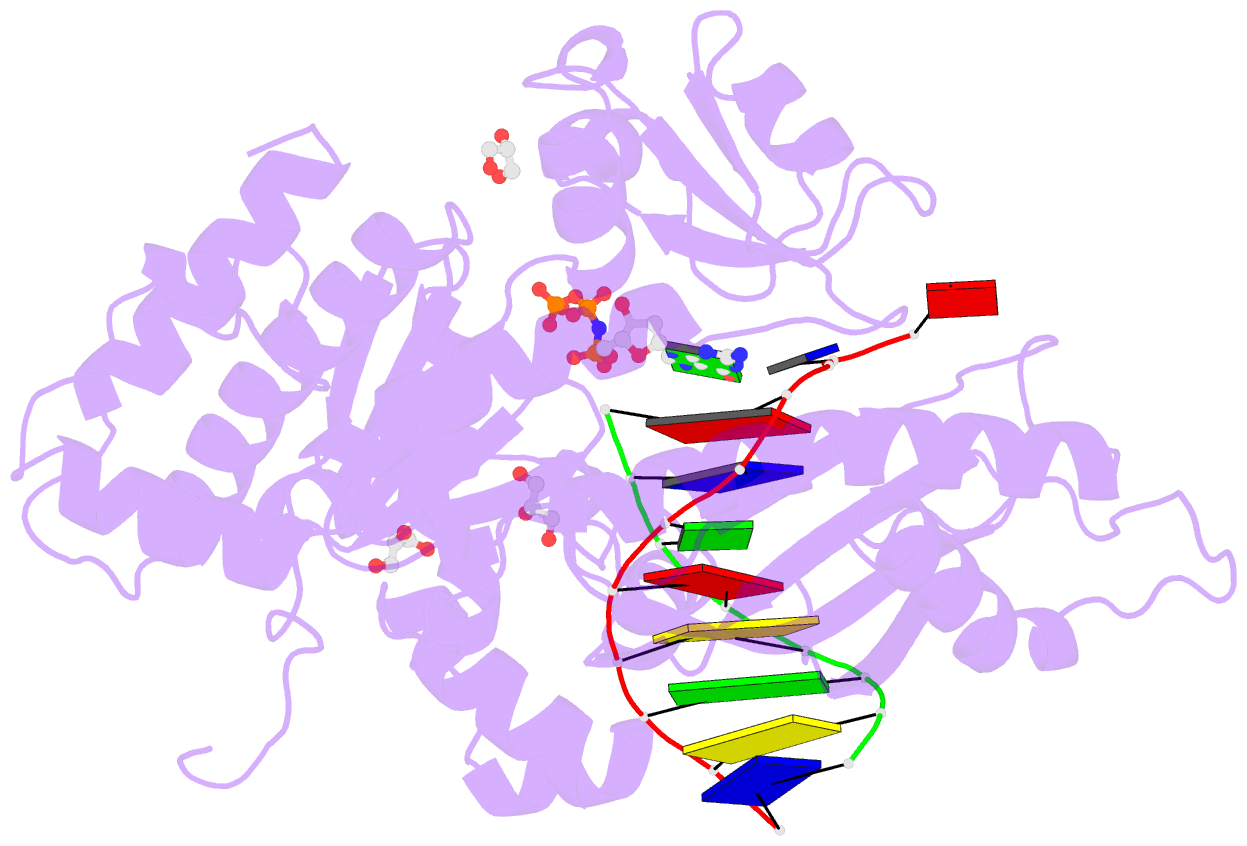Summary information and primary citation
- PDB-id
- 4rnn; SNAP-derived features in text and JSON formats;
DNAproDB
- Class
- transferase-DNA
- Method
- X-ray (1.808 Å)
- Summary
- Crystal structure of human polymerase eta inserting dgmpnpp opposite DNA template containing an abasic site
- Reference
- Patra A, Zhang Q, Lei L, Su Y, Egli M, Guengerich FP (2015): "Structural and Kinetic Analysis of Nucleoside Triphosphate Incorporation Opposite an Abasic Site by Human Translesion DNA Polymerase eta." J.Biol.Chem., 290, 8028-8038. doi: 10.1074/jbc.M115.637561.
- Abstract
- The most common lesion in DNA is an abasic site resulting from glycolytic cleavage of a base. In a number of cellular studies, abasic sites preferentially code for dATP insertion (the "A rule"). In some cases frameshifts are also common. X-ray structures with abasic sites in oligonucleotides have been reported for several microbial and human DNA polymerases (pols), e.g. Dpo4, RB69, KlenTaq, yeast pol ι, human (h) pol ι, and human pol β. We reported previously that hpol η is a major pol involved in abasic site bypass (Choi, J.-Y., Lim, S., Kim, E. J., Jo, A., and Guengerich, F. P. (2010 J. Mol. Biol. 404, 34-44). hpol η inserted all four dNTPs in steady-state and pre-steady-state assays, preferentially inserting A and G. In LC-MS analysis of primer-template pairs, A and G were inserted but little C or T was inserted. Frameshifts were observed when an appropriate pyrimidine was positioned 5' to the abasic site in the template. In x-ray structures of hpol η with a non-hydrolyzable analog of dATP or dGTP opposite an abasic site, H-bonding was observed between the phosphate 5' to the abasic site and water H-bonded to N1 and N6 of A and N1 and O6 of G nucleoside triphosphate analogs, offering an explanation for what appears to be a "purine rule." A structure was also obtained for an A inserted and bonded in the primer opposite the abasic site, but it did not pair with a 5' T in the template. We conclude that hpol η, a major copying enzyme with abasic sites, follows a purine rule, which can also lead to frameshifts. The phenomenon can be explained with H-bonds.





